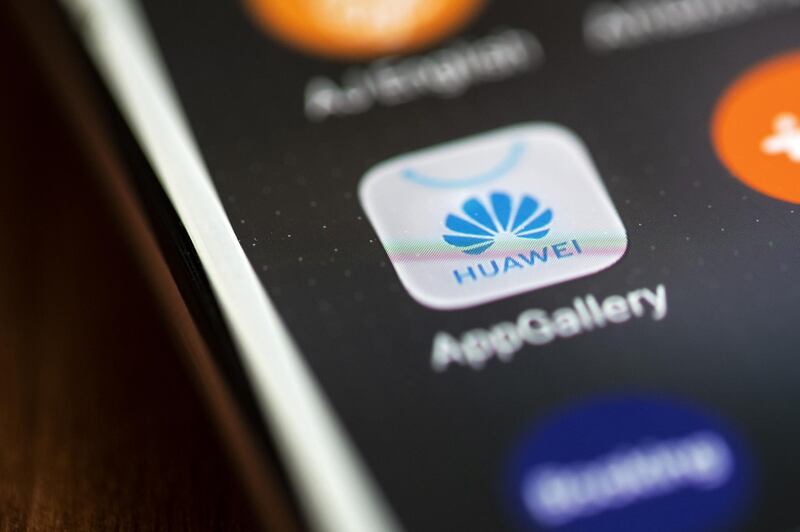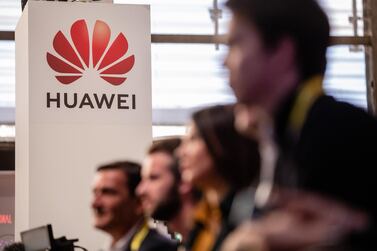American tech firms, including chipmakers and mobile service providers, have had to cut some commercial ties with Huawei, after the Trump administration blacklisted the Chinese telecom giant last week, accusing it of aiding Beijing in espionage.
Alphabet-owned Google has barred the supply of hardware, software and all technical services, including access to Android - the most widely used operating system in the world.
Industry analysts say besides potentially delaying the global roll-out of 5G, the move will adversely affect Huawei’s smartphone business in Android-dominated markets like India and South Asia.
According to Google, there are about 2.5 billion active Android devices worldwide. In the second quarter of last year, nearly 88 per cent of all smartphones sold were using the Android operating system, according to Statista.
The National looks at how the blacklisting of Huawei in the United States will affect its business and consumers worldwide.
How will this affect smartphone users?
Google's restrictions will only affect future Huawei smartphone users, but as the world’s second largest producer of handsets - with 17.9 per cent global market share - that is not a small population, and it is only growing. The Shenzhen-headquartered firm's market share surged 50 per cent annually and outgrew all major rivals to ship 59.1 million smartphones worldwide in the first quarter this year, up from 39.3 million during the same period last year.
Current Huawei users will continue to have access to the Google Play Store and all Android applications, as well as security updates to Android. Customers will also still be able to access Android Open Source Project, which is available for free and offers outdated versions of apps.
Google apps such as Gmail, YouTube and its Chrome browser that are available through Google’s Play Store will disappear from future Huawei handsets because those services require a commercial agreement with Google.
However, the impact is expected to be minimal in its home market of China, which is host to just over half of its customers. Most Google mobile apps are banned in China, where alternatives are offered by domestic competitors such as Tencent and Baidu.
Huawei’s European business, its second-biggest market, could be hit as it licences services from Google in Europe.
Does this change the timeline for 5G's roll-out?
US vendors that are supplying parts for Huawei to build 5G infrastructure may have to stop selling to China's largest tech company. Such action would comply with the US Commerce Department's inclusion of Huawei on its list of companies that are banned from buying technology from US companies without government approval.
American chipmakers such as Intel, Qualcomm, Broadcom and Xilinx will ultimately have to stall the supply of crucial components to Huawei. Neil Campling, co-head global thematic group at asset manager Mirabaud Securities told The National this is likely to delay the global roll-out of the 5G network.
“Huawei is ahead of many global companies in [5G] technology. Here, the US is attempting to curtail its growth while giving time for other firms to catch-up,” he said.
Does Huawei have a Plan B?
Huawei has confirmed that it developed an exclusive operating system for its devices in the wake of ongoing friction with the US government. The company’s mobile chief Richard Yu said in an earlier interview that Huawei has its own operating system if it turns out they can no longer use Android.
"As a contingency plan, Huawei is already working on an alternative to Android since last year … it seems that Huawei was anticipating [Google's] move," Abbas Ali, managing editor of TechRadar Middle East, told The National.
Huawei also has its own store for downloading apps in China that could be rolled-out worldwide.
How will this impact Huawei’s bottom line?
Huawei's growth is fuelled primarily by domestic consumption in its home market and Asia, so the impact to its business performance is likely to be minimal - at least until a fuller picture is revealed of how this will affect its supply chain.
Huawei derived half of its revenue from China in 2017, which was followed by Europe, the Middle East and Africa as one unit (27 per cent), Asia Pacific in third (12.3 per cent), the Americas in fourth (6.5 per cent) and other markets accounting for 3.5 per cent of total sales.
“Huawei has been preparing for disruption of services for quite some time … since their CFO was arrested in Canada last year. There could be few issues but I would not say that Huawei was not prepared for this,” said Mr Campling.
Industry experts say, however, it may hurt Huawei's business in the short-term, the outcome depends on how the company adapts in the long-run.
“It will not affect its business inside China as Google is already prohibited there. They only need to adapt fast to this new ecosystem outside China,” Mr Ali said.
How has Huawei responded?
In a statement issued on Monday, Huawei said it has made substantial contributions to the development and growth of Android around the world.
"As one of Android’s key global partners, we have worked closely with their open-source platform to develop an ecosystem that has benefitted both users and the industry,” Huawei said, reacting to Google’s freshly-imposed restrictions.
“Huawei will continue to provide security updates and after sales services to all existing Huawei and Honor smartphone and tablet products covering those have been sold or still in stock globally.”








